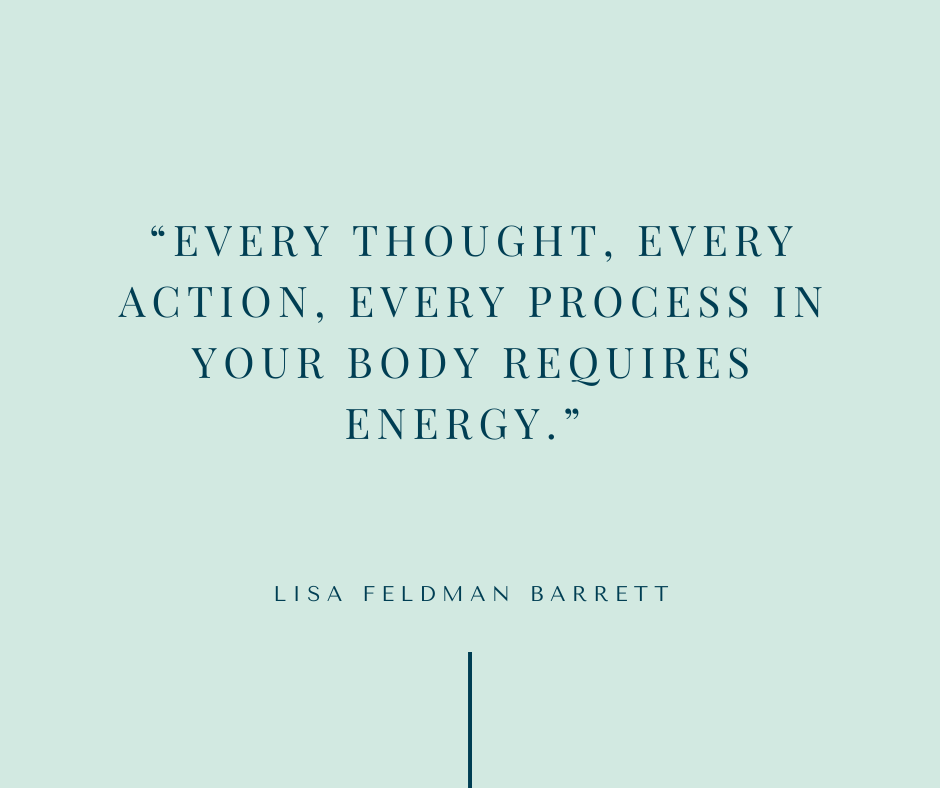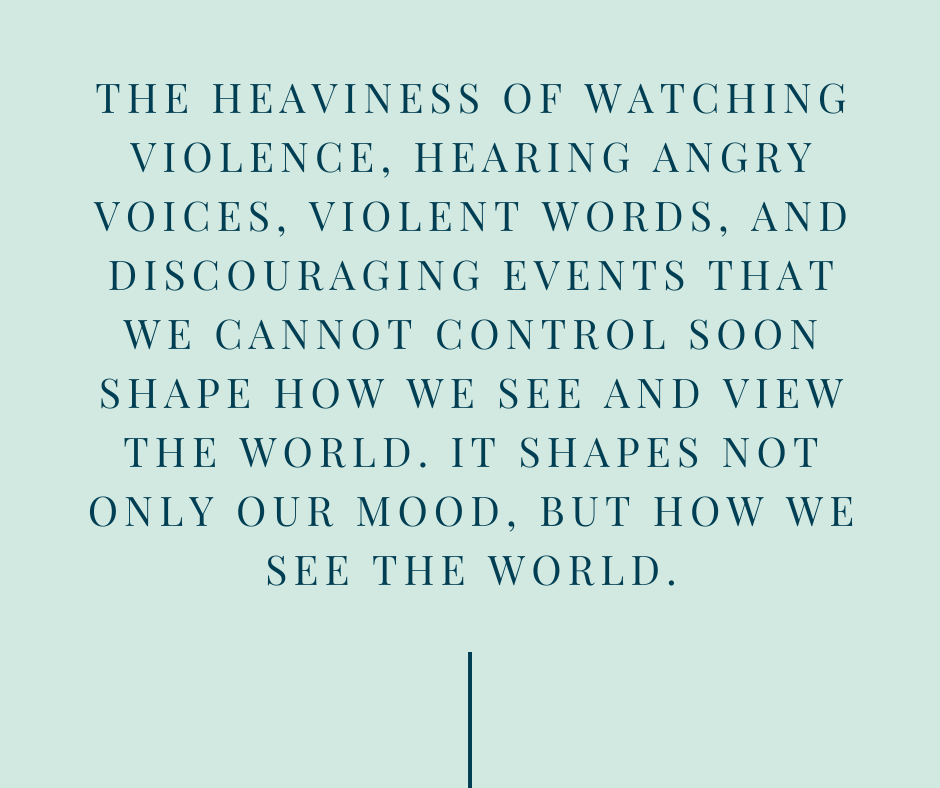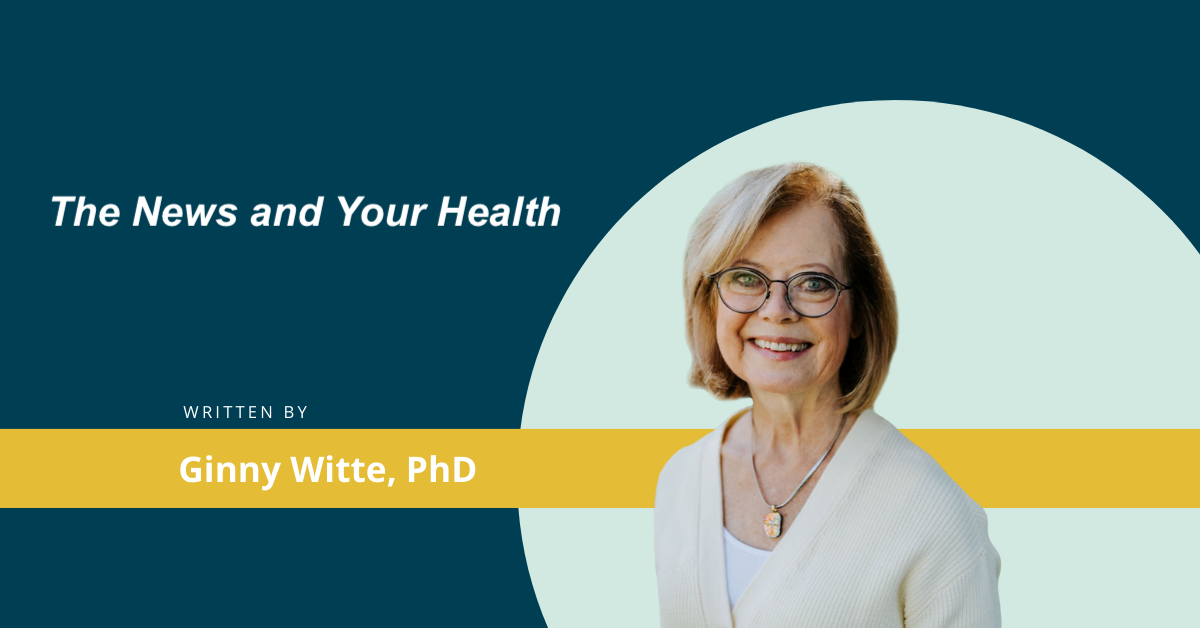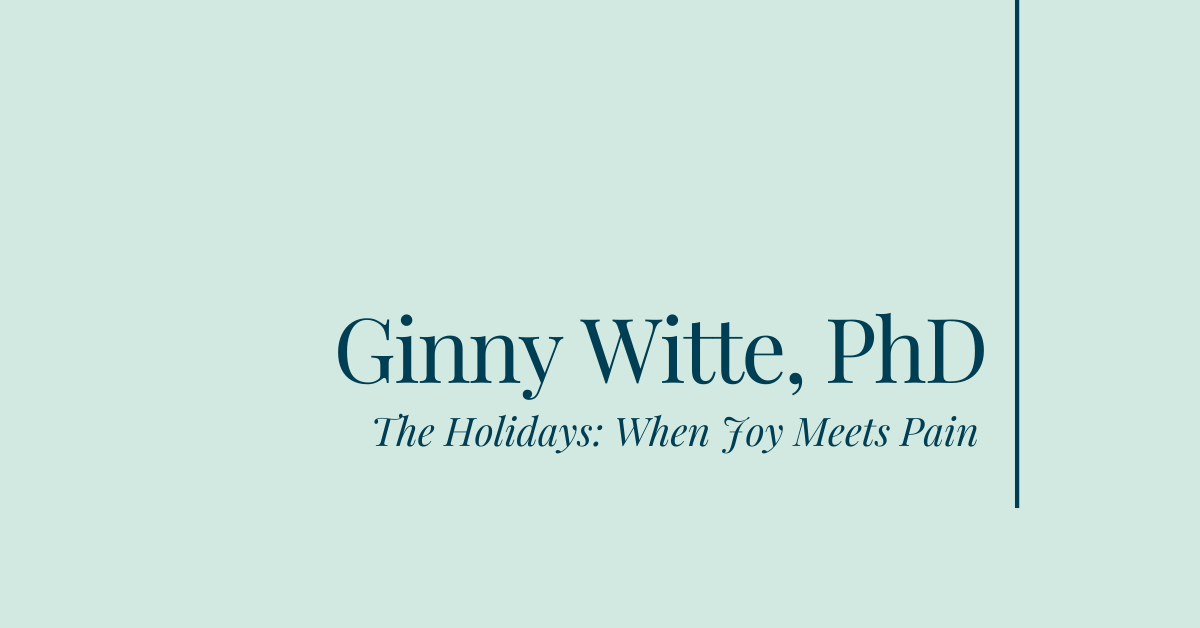If the news is stressing you out, you’re not alone. Many are suffering from what is called “media saturation overload” “doomscrolling,” “headline anxiety,” or “headline stress disorder.” Media overload is increasing stress levels, depression, anxiety, fear, worry, and problems concentrating.
As news stations compete for your attention, they often use fear to pull you in. Yet, the news rarely gives you warm fuzzies. More often it prickles your spine, or sends your heart rate into a tailspin. Science is showing that this may not be a good thing for your brain or your body. We may all need to ration our exposure, be selective where we get our news, where we spend our mental energy, and how much time we give to the negative in our lives.
This constant stream of bad news is affecting sleep, attitudes, physical health and our mental health.
The News Directs What We Pay Attention To
As the media uses your senses to grab your attention, it is also directing where your attention will go. As you follow the news trail there are biases that affect our beliefs and mental state. Understanding these biases can help you bring more balance to your understanding of the world as well as protect your health.
Certain biases seem to be wired into our brains. Three biases shared here are the negativity bias, availability bias, and confirmation bias. Historically these biases help us predict danger in our environment. Today these biases can both contribute to a biased view of truth and impact our mental and physical wellbeing.
Our reality can be created. Historically, what we lived was our reality. Today what we see in the media may be the reality in another part of the world, or actually not reality but created content. It may not be our reality. However, when viewing media content, we may feel that what we see is also our reality. Consider how these biases impact your beliefs and your view of the world.
- The human brain has a bias towards the negative. This negativity bias is part of your survival system and draws your attention and thoughts to what is negative. We humans gravitate to the bad news, and journalists and creators of news offer more of it. While this seems to be the way news works worldwide, research shows that between 2009 and 2019 there has been a steady increase in the U.S. producing news showing anger, fear and sadness. This continual river of badness can push your stress button and in the end put your mood on a downhill slope.
- Humans also tend to believe that what is most recent in the news is most likely to occur again. Researchers call this availability bias. For example, think back to how you felt when you read or saw news of a shark attack. While shark attacks are rare, when seeing a citing or attack in the news it is common to believe they are frequent. Almost immediately there will be fewer people swimming in oceans.
When we see bad events replayed on the news, it often becomes our reality. The downside of this is that our brain tends to use recent experiences to predict life. This is helpful in the sense that we can be prepared if this were really the case, but most times it is not. The brain may be wired this way to keep us alert and safe. But most of the time we need to do just a bit more exploring to remind our brain that what we see on the news is not happening in our neighborhood. Or, the incident is not common, but an isolated or rare occurrence. Just as the human brain is wired to take our attention to the negative, the human brain is wired to attend to what is recent. Fear is a powerful emotion that takes us there.
- A third common bias is confirmation bias. Confirmation bias means we look for information that confirms or supports what we believe and push away information that disconfirms or doesn’t support what we believe. The process of confirming what we believe strengthens our beliefs but is not an objective process. To look objectively involves considering information that both supports and is against what we believe as well as information for and against what we don’t believe. Confirmation bias can occur in relation to what information newswriters look for as well as the news we humans select and watch. As humans, we’re not so likely to take the long path and assess all sides. You can see this play out in recent news on COVID, politics, wars, and our ever growing political divide. When people learn more about confirmation bias, both in themselves and in the journalists, the door is opened to have more interesting and productive conversations about important topics that affect all of us.
Understanding how and why these biases work while managing what you view and how often can offset the resulting effect of all this negativity on your life.
Your Body Budget and Stress
Your brain and body often choose efficiency over accuracy for survival in an attempt to preserve resources.
Did you know that your body has a a limited amount of resources, or a metabolic budget, that works to keep you alive and functioning each day? Lisa Feldman Barrett calls this your body budget. This is commonly known as allostasis, or the body’s ability to communicate with all its parts to help you flexibly adapt, to adjust and to support you in all the things you must do in your day. When you become suddenly stressed, for example by the news, your body feels a threat and begins to mobilize to keep you safe. You feel this as increased energy, sweaty palms, an increase in your heart rate or blood pressure. You may feel a tightness in your chest, or a little bit of anger. For these body changes to occur, you need more resources and energy. The state of mobilization is metabolically costly.
When the body is in long, or excessive states of stress, your body budget is out of balance and resources quickly become depleted. As your resources become more depleted, you have less energy to simply complete your daily tasks. Now you become fatigued, sad, downhearted, hopeless. . .
Using precious resources to manage daily life is the reason your body needs time for rest and recovery. You need to daily refuel your body to carry on vital processes that keep you functioning and at your best. Quality sleep, nutritious food, nurturing relationships, downtime, and healthy exercise all help you refuel.
A body budget that is out of balance may also be the reason you need to limit your intake of the news.

Most of us are not aware of this budget. However, we do recognize when we are burned out, depressed, exhausted, and mentally depleted. Our budget is drained.
Online platforms, the news, and social media are not concerned about your budget, they are concerned about your attention, and will continually find and use ways to pull you in and keep you there.
Continued activation of your fear response means your body pays a price. You have less resources for doing the things you love or need to do. When you use up your resources, your body slows you down, or puts you in a state of immobilization. This is the place where hopelessness, depression, shame, and dissociation live. This is also where trauma lives. Excessive viewing of frightful news has been shown to cause secondary trauma.
Research has also shown that when you continue to view a traumatic event through media your stress levels can be higher than being directly exposed to the traumatic situation in person. Yes, repeated exposure takes a toll.

News Can Be Metabolically Costly to Your Body
Researchers have discovered through scanning people’s brains that burdening your senses with negative news activates your threat system. This affects your mental state, has a negative effect on your metabolism and your immune and endocrine systems.
Your brain’s job is actually to regulate all your body processes.
Essentially, your body changes its activity in relation to what it sees, hears, and senses. With negative news you may notice some of these physiological changes as your anger rises, your palms begin to sweat, and your blood pressure goes up. These are signs your threat system has been activated. So as you sit in your comfy chair with a warm drink and your pup by your side, the news is revving up your nervous system and the organs that keep you alive and healthy to tackle the perceived threat.
Negative News Can Affect Your Ability to Self-Regulate
A recent study at Stanford University showed that chronically stressed or anxious adolescents had more trouble regulating their emotions in response to viewing a distressing picture. When presented with a neutral image and a distressing image while their brains were scanned with fMRI, the amygdala, or the fear center of the brain was highly activated, sending signals to the dLPFC, a portion of the brain that helps you regulate. However, their brains had trouble sending signals back to the amygdala to down regulate. This shows the difficulty you can experience in regulating emotions and behavior in response to viewing distressing situations. You can get stuck in this high arousal state.
Being stuck, can cause you to continue to watch more, then check back, and continue checking. As social media uses their algorithms to monitor your use and interests it quickly sends you more of the same. As noted above, this tends to confirm to you that what you see is true. You may lose a balanced perspective about the news you are watching. Soon you are lost in a sea of painful, distressing, depressing problems. This begins to shape your worldview and you may find your emotions begin to sink. You may no longer have the energy to keep your emotions up and have difficulty regulating the emotional dump.
All this comes at a metabolic cost. It costs precious energy and resources to produce each thought, action, and memory that you experience. Spending time in a puddle of badness not only shapes how you see the world, it shapes how you feel.
So the critical question we all must ask is how do we want to spend your precious metabolic energy? It is important to know what is in the news so carefully choosing what news to watch or read, how much time to spend reading, and what time of day to do so become critical questions to ponder.
Our emotions, our thoughts, and our reality are formed from how we live our life and what we spend time doing. The good news is we can make choices.
So what can you do?
You can begin by understanding how the body works and create more balance in your life.

Three Takeaways
- Though you may not experience the tragedy on the news first hand, viewing the news second hand affects your mental and physical health.
- Excessive viewing or listening to traumatic events can cause secondary trauma.
- We create our beliefs and shape our health through the experiences that we partake in.
What Can We do?
- Carefully choose news that is factual without violent language, violent expressions, and violent voices.
- Mix your reading and news with various points of view and beliefs. Consider the biases of the news source when choosing your news source.
- Limit the amount of time you spend on social media or taking in the news.
- Balance the negativity with nurturing and positive experiences. This balance in your life will help you shift from a state of flight / flight to a state of rest and restoration. You can essentially reset your nervous system by getting away from the news and finding pleasurable experiences.
- While we cannot change what is going on in the world, we can shape our immediate world by controlling, or consciously choosing what to focus on during our day. Take time to be mindful, grateful, and have empathy for those around you.
- Be mindful of your mood throughout the day. When does it change and why? What can you do to nurture and increase your body budget?
- Think about your personal metabolic budget and triage what you need to do that day and where your resources will go. What is your utmost priority? What do you need to give the most resources to today?
- Be sure to build your metabolic strength with plenty of sleep, healthy food, nurturing relationships, and exercise,
- Take a Positivity Test here: http://www.positivityratio.com/single.php\
Essentially we must all ask, how do we want to spend the metabolic resources we have and how do we provide opportunities to replenish our resources each day? How can you be your best self, keep an informed and objective view of the world, and shape your own worldview rather than having the news shape it for you.
Resources
Abdala et al. (2021). Media exposure and risk of post-traumatic stress disorder following a mass traumatic event: An in-silico experiment. Frontiers in Psychology, 12, 674263. doi: 10.3389/fpsyt.2021.674263
Center for Humane Technology. (2022). Attention & Mental Health. Center for Humane Technology. https://www.humanetech.com/attention-mental-health
Center for Humane Technology. (2022). The attention economy: Why do tech companies fight for our attention? Center for Humane Technology Youth Toolkit.
https://www.humanetech.com/youth/the-attention-economy
Chu, B., Marwaha, K., Sanvictores, T., & Ayers, D., (2022). Physiology, stress reaction. StatPearls [Internet]. StatPearls Publishing. https://www.ncbi.nlm.nih.gov/books/NBK541120/
Feldman Barrett, L. (2020-Nov 16). Understanding the body budget with Lisa Feldman Barrett, PhD. [Audio Podcast]. Therapy for Real Life Podcast. https://podcasters.spotify.com/pod/show/therapy-for-real-life/episodes/Understanding-The-Body-Budget-with-Lisa-Feldman-Barrett–PhD-eljs7a
Fredrickson, B. L. (2009). Positivity: Top-notch research reveals the 3 to 1 ratio that will change your life. MFJ Books.
Godoy, L. D., Rossignoli, M. T., Delfino-Pereira, P., Garcia-Cairasco, N., & Henrique de Lima Umeoka, E. (2018). A comprehensive overview on stress neurobiology: Basic concepts and clinical implications. Frontiers in Behavioral Neuroscience, 12(127). doi: 10.3389/fnbeh.2018.00127
Holman, E. A., Garfin M. R., & Cohen Silver, R. (2013). Media’s role in broadcasting acute stress following the Boston marathon bombings. PNAS, 111(1), 93-98.
Huff, C. (2022, Nov. 1). Media overload is hurting our mental health. Here are ways to manage headline stress. American Psychological Association, 53(8). https://www.apa.org/monitor/2022/11/strain-media-overload
Rozado, D. & Hughes, R. (2022). Longitudinal analysis of sentiment and emotion in news media headlines using automated labeling with transformer language models. PLOS ONE, 17(10), e0276367. https://doi.org/10.1371/journal.pone.0276367
Warren, S. L., Zhang, Y., Duberg, K., Mistry, P., Cai, W., Qin, S., Bostan, S.-N., Padmanabhan, A., Carrion, V. B., & Menon, V. (2020). Anxiety and stress alter decision-making dynamics and causal amygdala-dorsolateral prefrontal cortex circuits during emotion regulation in children. Biological Psychiatry, 88(7), 576-586. doi:10.1016/j.biopsych.2020.02.011.
Wing Kossner, A. (2021, Feb. 10). The mind at work: Lisa Feldman Barrett on the metabolism of emotion. The Mind at Work. https://blog.dropbox.com/topics/work-culture/the-mind-at-work–lisa-feldman-barrett-on-the-metabolism-of-emot



